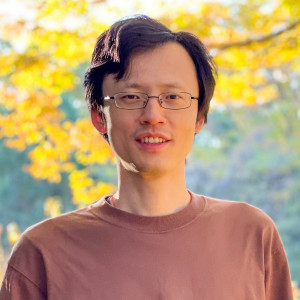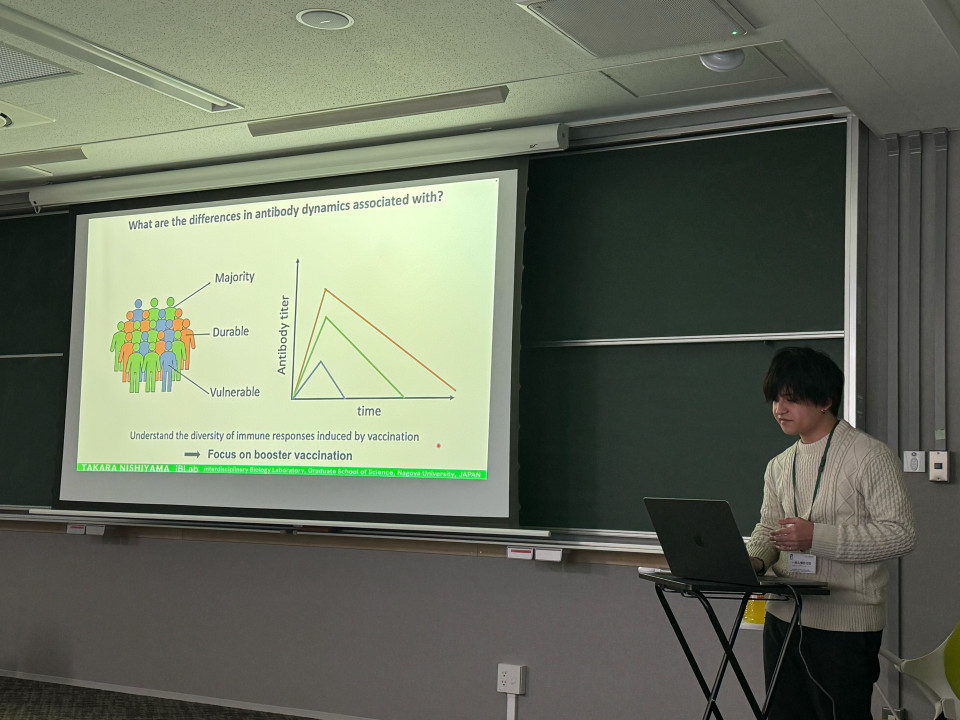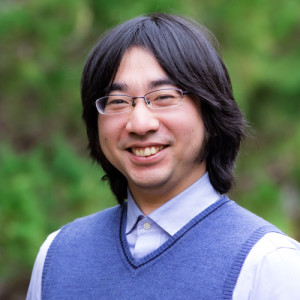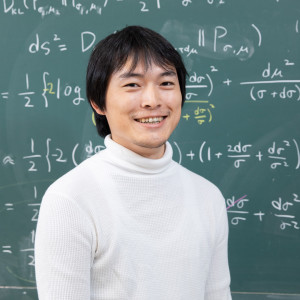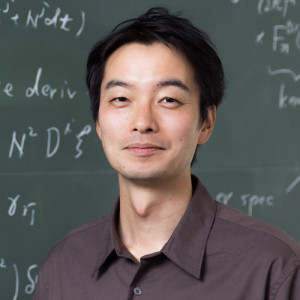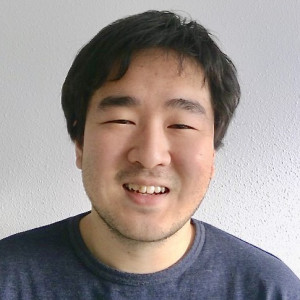Volume 283
Back to Newsletter List
Hot Topic
Farewell message from Yalong Cao
2023-12-25
Our colleague Yalong CAO will move to the Morningside Center of Mathematics and the Institute of Mathematics at the Chinese Academy of Science in Beijing as an Associate Professor, starting from Jan. 9, 2024. We all wish him success in his new affiliation! Here is a message from Yalong:
I am deeply in debt of gratitude to Hatsuda san and all iTHEMS assistants for their generous support over the two and a half years which I spent in iTHEMS. To mathematicians, maybe the most important thing is to have an environment where we can freely develop things that fascinate us, which might not be useful for something else immediately. It is a great fortune to me that iTHEMS provides such an environment. Besides that, I have been enjoying discussing with our lovely members and also wandering in the beautiful Wako campus (especially during Spring and Autumn), which helps to refresh me all the time.
I will move to the Chinese Academy of Sciences in Beijing to work and become a visiting scientist of iTHEMS. I hope to come back to visit regularly and continue to enjoy everything here. Everyone is surely very welcome to visit me in Beijing. Let's keep in touch and keep enjoying our life and career.
Seminar Report
Quantum Matter Seminar by Yuji Hirono on December 22, 2023
2023-12-28
On December 22nd, Professor Yuji Hirono from Kyoto University gave an online seminar talk in Quantum Matter Study Group, exploring the intricate world of fractonic phases. His talk, titled "A symmetry principle for gauge theories with fractons," ran from 5pm to 6:15pm JST.
Taking center stage were fractons, unusual quasiparticles with a surprising quirk – they are practically immobile when alone. A key feature of the fractons, making them distinct from typical topological objects, is that their stability is not protected by an energy gap. Instead, it is the underlying symmetries that guarantee their properties. Professor Hirono used simple examples, like the conservation laws of dipoles and the connection to the immobility, to illuminate this unique property. This immobility sets fractons apart from the more conventional particles that we are familiar with, sparking fascination and curiosity about their underlying mechanisms.
Central to his discussion was the formulation of effective theories based on the spontaneous breaking of these nonuniform symmetries. At low energies, these theories simplify into known higher-rank gauge theories, such as scalar/vector charge gauge theories. The gapless excitations in these theories are interpreted as Nambu–Goldstone modes for higher-form symmetries. A novel aspect highlighted was the acquisition of a gap by some modes due to the nonuniformity of the symmetry, analogous to the inverse Higgs mechanism in spacetime symmetries. This framework elucidates the mobility restrictions of fractons as determined by the commutation relations of charges with translations. This illuminating seminar offered a glimpse into the remarkable world of fractonic phases and the power of novel symmetry principles.
Reported by Ching-Kai Chiu
A symmetry principle for gauge theories with fractons
December 22 (Fri) 17:00 - 18:15, 2023
Seminar Report
iTHEMS Biology Seminar by Takara Nishiyama on December 19, 2023
2023-12-25
In this seminar, Mr. Nishiyama delivered a lecture primarily on a cohort study of COVID-19, focusing on the application and interpretation of mathematical models. The content of this lecture provided us, the audience, with extremely valuable insights in the context of how to give back to society through mathematical modeling. In particular, he demonstrated how things that are not apparent in normal statistical analysis can be quantitatively compared and interpreted through mathematical models and parameter estimation. He also proposed a simple model for parameter estimation, which is feasible even with few data points and highly heterogeneous data, and applied this model. Therefore, we were able to see the essence of data-driven mathematical research. This lecture was a very meaningful event from both the perspectives of research content and research approach.
Reported by Daiki Kumakura
Application of mathematical models to the COVID-19 cohort study
December 19 (Tue) 16:00 - 17:00, 2023
Upcoming Events
Workshop
Functional Renormalization Group at Niigata 2024
January 7 (Sun) - 8 (Mon) 2024
Gergely Fejös (Associate Professor, Institute of Physics and Astronomy, Eötvös Loránd University, Hungary)
Kenji Fukushima (Professor, Department of Physics, Graduate School of Science, The University of Tokyo)
Kouichi Okunishi (Associate Professor, Faculty of Science, Niigata University)
Junichi Haruna (Ph.D. Student, Graduate School of Science, Kyoto University)
Xu-Guang Huang (Professor, Physics Department and Center for Particle Physics and Field Theory, Fudan University, China)
Katsumi Itoh (Professor, Faculty of Education, Niigata University)
Kiyoharu Kawana (Research Fellow, Korea Institute for Advanced Study (KIAS), Republic of Korea)
Shunsuke Yabunaka (Researcher, Japan Atomic Energy Agency (JAEA))
Takeru Yokota (Special Postdoctoral Researcher, RIKEN Interdisciplinary Theoretical and Mathematical Sciences Program (iTHEMS))
One of the most fundamental challenges in theoretical physics is to uncover the physical properties of strongly-interacting quantum many-body systems. This problem is shared in both subatomic physics and condensed matter physics; e.g., to unveil ground state structures and dynamical aspects of quantum systems. However, it has been an unresolved issue to establish non-perturbative theoretical tools, which allows a reliable analytic approach to quantum many-body problems described by field theory. The Functional Renormalization Group (FRG) is proposed as one of the theoretical methods that facilitates the non-perturbative investigation of quantum many-body systems. The FRG has found applications in various fields of physics, ranging from particle and nuclear physics to condensed matter physics, leading to several unique achievements in each fields. The aim of this two-day workshop is to provide an overview of the recent applications and progress of FRG in various fields of physics, discuss future directions, and explore potential new collaborations that bridge different fields of physics.
Venue: Kaishi Professional University Yoneyama Campus / via Zoom
Event Official Language: English
Others
Seoul National University student group visit
January 10 (Wed) 14:00 - 20:00, 2024
Catherine Beauchemin (Deputy Program Director, RIKEN Interdisciplinary Theoretical and Mathematical Sciences Program (iTHEMS))
Akinori Tanaka (Senior Research Scientist, RIKEN Center for Advanced Intelligence Project (AIP))
Misako Tatsuuma (Research Scientist, RIKEN Interdisciplinary Theoretical and Mathematical Sciences Program (iTHEMS))
Ryo Namba (Senior Research Scientist, RIKEN Interdisciplinary Theoretical and Mathematical Sciences Program (iTHEMS))
Dongwook Ghim (Postdoctoral Researcher, RIKEN Interdisciplinary Theoretical and Mathematical Sciences Program (iTHEMS))
Steffen Backes (Senior Research Scientist, RIKEN Interdisciplinary Theoretical and Mathematical Sciences Program (iTHEMS))
A group of 22 undergraduate students in the GLEAP programme at Seoul National University will visit iTHEMS to hear short talks by our members, exchange one-on-one, and visit our facilities. I would like to encourage all available iTHEMS members to take part in this event which will be held in different spaces throughout the day, all at the RIKEN Wako campus Main Research Building:
15:50-16:10 at iTHEMS Common Room (#246-248)
Coffee break with iTHEMS members and SNU visitors
16:10-17:50 on 4th floor, room #435-437
Short talks by iTHEMS members
18:05-18:30 in 3rd floor common space
Short intro talks by SNU visitors
18:30-20:00 in 3rd floor common space
Free informal discussion between SNU visitors and iTHEMS members over some light food
[Note some slight changes in the times previously announced]
Venue: 3rd floor public space, Main Research Building, RIKEN Wako Campus / #435-437, Main Research Building, RIKEN Wako Campus / Common Room #246-248, 2F Main Research Building, RIKEN
Event Official Language: English
Seminar
ABBL-iTHEMS Joint Astro Seminar
Probing structure of neutron stars through X-ray bursters
January 12 (Fri) 14:00 - 15:15, 2024
Akira Dohi (Special Postdoctoral Researcher, Astrophysical Big Bang Laboratory, RIKEN Cluster for Pioneering Research (CPR))
Type-I X-ray bursts are rapidly brightening phenomena triggered by the nuclear burning of light elements near the surface of accreting neutron stars. Most of the X-ray bursters show irregular behavior of light curves. However, some X-ray bursters are somehow quite regular, i.e., constant recurrence time and constant shaper of light curves, and are often called Clocked bursters, which are powerful sites to probe uncertainties of many model parameters such as accretion rate, the composition of accreted matter, reaction rates, neutron star structure, and temperature. In this study, we focus on the uncertainties of the equation of states, which determines the latter two properties. Based on our numerical models covering whole areas of neutron stars, we will present their impact on X-ray burst light curves. Furthermore, we will discuss the possibility of constraining the equation of states from Clocked bursters such as GS 1826-24 and 1RXS J180408.9-342058.
Venue: Seminar Room #359, 3F Main Research Building, RIKEN / via Zoom
Event Official Language: English
Seminar
iTHEMS Seminar
Dust-driven instabilities in protoplanetary disks: toward understanding formation of planetesimals
January 17 (Wed) 10:30 - 11:30, 2024
Ryosuke Tominaga (Special Postdoctoral Researcher, Star and Planet Formation Laboratory, RIKEN Cluster for Pioneering Research (CPR))
Planet formation starts from collisional growth of sub-micron-sized dust grains in a gas disk called a protoplanetary disk. They are expected to grow toward km-sized objects called planetesimals. The resulting planetesimals further coalesce by gravity and form planets. However, there are some barriers preventing planetesimal formation, which includes fast radial drift and collisional fragmentation of dust grains. To circumvent the barriers and to explain planetesimal formation, previous studies have proposed hydrodynamic instabilities of dusty-gas disks. The instabilities can cause dust clumping, and planetesimals form if the resulting clumps collapse self-gravitationally. We have been investigating the linear/nonlinear development of these dust-gas instabilities. We also found a new instability driven by collisional growth of dust, which can bridge a potential gap between the first dust growth and the later planetesimal formation via the previous instabilities. In this talk, I will introduce our work on the dust-driven instabilities and their impact on planetesimal formation.
Venue: Hybrid Format (3F #359 and Zoom), Main Research Building, RIKEN Wako Campus
Event Official Language: English
Seminar
RIKEN Quantum Seminar
Methods for neural decoding using machine learning, deep learning, and quantum-inspired algorithms
January 17 (Wed) 15:00 - 16:15, 2024
Kei Majima (Researcher, National Institutes for Quantum Science and Technology (QST))
Note: The format of this event has changed from hybrid to Zoom only. However, you will still be able to watch it on the screen in Room #359 of the Main Research Building.
(This is a joint seminar with iTHEMS Biology group.)
Recent advances in machine learning have enabled the extraction of intrinsic information from neural activities, a field known as neural decoding. In this presentation, I will introduce several machine learning methods recently developed for neural decoding analysis: 1) a method for visualizing subjective images in the human mind based on brain activity [1], 2) a supervised algorithm designed for predicting discrete ordinal variables [2], and 3) a fast classical algorithm algorithm inspired by quantum computation for approximating principal component analysis (PCA) and canonical correlation analysis (CCA), potentially allowing for the analysis of vast-dimensional neural data [3]. Following these presentations, I am eager to engage in discussions with participants at the RIKEN Quantum Seminar regarding potential collaborations.
References
- N. Koide-Majima, S. Nishimoto, and K. Majima, Mental image reconstruction from human brain activity: Neural decoding of mental imagery via deep neural network-based Bayesian estimation, Neural Networks 170, 349 (2024), doi: 10.1016/j.neunet.2023.11.024
- E. Satake, K. Majima, S. Aoki, and Y. Kamitani, Sparse ordinal logistic regression and its application to brain decoding, Frontiers in Neuroinformatics 12, 51 (2018), doi: 10.3389/fninf.2018.00051
- N. Koide-Majima and K. Majima, Quantum-inspired canonical correlation analysis for exponentially large dimensional data, Neural Networks 135, 55 (2021), doi: 10.1016/j.neunet.2020.11.019
Venue: via Zoom
Event Official Language: English
Seminar
RIKEN Quantum Seminar
Bayesian mechanics of classical, neural, and quantum systems
January 17 (Wed) 16:30 - 17:45, 2024
Takuya Isomura (Unit Leader, Brain Intelligence Theory Unit, RIKEN Center for Brain Science (CBS))
(This is a joint seminar with iTHEMS Biology group.)
Bayesian mechanics is a framework that addresses dynamical systems that can be conceptualised as Bayesian inference. However, the elucidation of requisite generative models is required for empirical applications to realistic self-organising systems. This talk introduces that the Hamiltonian of generic dynamical systems constitutes a class of generative models, thus rendering their Helmholtz energy naturally equivalent to variational free energy under the identified generative model. The self-organisation that minimises the Helmholtz energy entails matching the system's Hamiltonian with that of the environment, leading to an ensuing emergence of their generalised synchrony. In short, these self-organising systems can be read as performing variational Bayesian inference of the interacting environment. These properties have been demonstrated with coupled oscillators, simulated and living neural networks, and quantum computers. This notion offers foundational characterisations and predictions regarding asymptotic properties of self-organising systems exchanging with the environment, providing insights into potential mechanisms underlying emergence of intelligence.
References
- T. Isomura, Bayesian mechanics of self-organising systems, arXiv:2311.10216 (2023), arXiv: 2311.10216
- T. Isomura, K. Kotani, Y. Jimbo, and K. J. Friston, Experimental validation of the free-energy principle with in vitro neural networks, Nature Communications 14, 4547 (2023), doi: 10.1038/s41467-023-40141-z
- T. Isomura, H. Shimazaki, and K. J. Friston, Canonical neural networks perform active inference, Communications Biology 5, 55 (2022), doi: 10.1038/s42003-021-02994-2
Venue: Seminar Room #359, 3F Main Research Building, RIKEN / via Zoom
Event Official Language: English
Seminar
DMWG Seminar
Quantum Enhancement in Dark Matter Detection with Quantum Computation
January 22 (Mon) 16:00 - 18:00, 2024
Thanaporn Sichanugrist (Ph.D. Student, Graduate School of Mathematical Sciences, The University of Tokyo)
Shion Chen (Project Assistant Professor, International Center for Elementary Particle Physics (ICEPP), The University of Tokyo)
Title: Wave-like Dark Matter Search Using Qubits
Abstract:
The rapid controllability required for quantum computers makes the currently proposed quantum bit modalities also attractive as electromagnetic field sensors. One of the promising applications is wave-like dark matter searches, where the electric field converted from the coherent dark matter excites the qubits, leading to detectable signals [Phys. Rev. Lett. 131, 211001]. The quantum coherence between the qubits can be utilized to enhance the signal rate in a multi-qubit system. By designing an appropriate quantum circuit to entangle the qubits, it was found that the signal rate can scale proportionally to $n_q^2$, with $n_q$ being the number of sensor qubits, rather than linearly with $n_q$ [arXiv: 2311.10413]. In the seminar, we overview the theoretical framework of the search, elaborate on the signal-enhancing mechanism driven by quantum entanglement with specific examples of the quantum circuits, and discuss how the scheme can be implemented in the platform of future fault-tolerant quantum computers. We also provide the introduction of the experimental realization, and report the status of the experimental works carried out in UTokyo/ICEPP.
Venue: via Zoom
Event Official Language: English
Workshop
Second Workshop on Fundamentals in Density Functional Theory (DFT2024)
February 20 (Tue) - 22 (Thu) 2024
The density functional theory (DFT) is one of the powerful methods to solve quantum many-body problems, which, in principle, gives the exact energy and density of the ground state. The accuracy of DFT is, in practice, determined by the accuracy of an energy density functional (EDF) since the exact EDF is still unknown. Currently, DFT has been used in many communities, including nuclear physics, quantum chemistry, and condensed matter physics, while the fundamental study of DFT, such as the first principle derivations of an accurate EDF and methods to calculate many observables from obtained densities and excited states. However, there has been little opportunity to have interdisciplinary communication.
On December 2022, we had the first workshop on this series (DFT2022) at Yukawa Institute for Theoretical Physics, Kyoto University, and several interdisiplinary discussions and collaborationd were started. To share such progresses and extend collaborations, we organize the second workshop. In this workshop, the current status and issues of each discipline will be shared towards solving these problems by meeting together among researchers in mathematics, nuclear physics, quantum chemistry, and condensed matter physics.
This workshop mainly comprises lectures/seminars on cutting-edge topics and discussion, while a half-day session composed of contributed talks is also planned.
This workshop is partially supported by iTHEMS-phys Study Group. This workshop is a part of the RIKEN Symposium Series.
The detailed information can be found in the workshop website.
Venue: 8F, Integrated Innovation Building (IIB), Kobe Campus, RIKEN / via Zoom
Event Official Language: English
Paper of the Week
Week 5, December 2023
2023-12-28
Title: Physics-informed neural network for solving functional renormalization group on lattice
Author: Takeru Yokota
arXiv: http://arxiv.org/abs/2312.16038v1
Title: Non-Hermitian $p$-wave superfluid and effects of the inelastic three-body loss in a one-dimensional spin-polarized Fermi gas
Author: Hiroyuki Tajima, Yuta Sekino, Daisuke Inotani, Akira Dohi, Shigehiro Nagataki, Tomoya Hayata
arXiv: http://arxiv.org/abs/2312.15724v1
If you would like to cancel your subscription or change your email address,
please let us know via our contact form.
Copyright © iTHEMS, RIKEN. All rights reserved.


